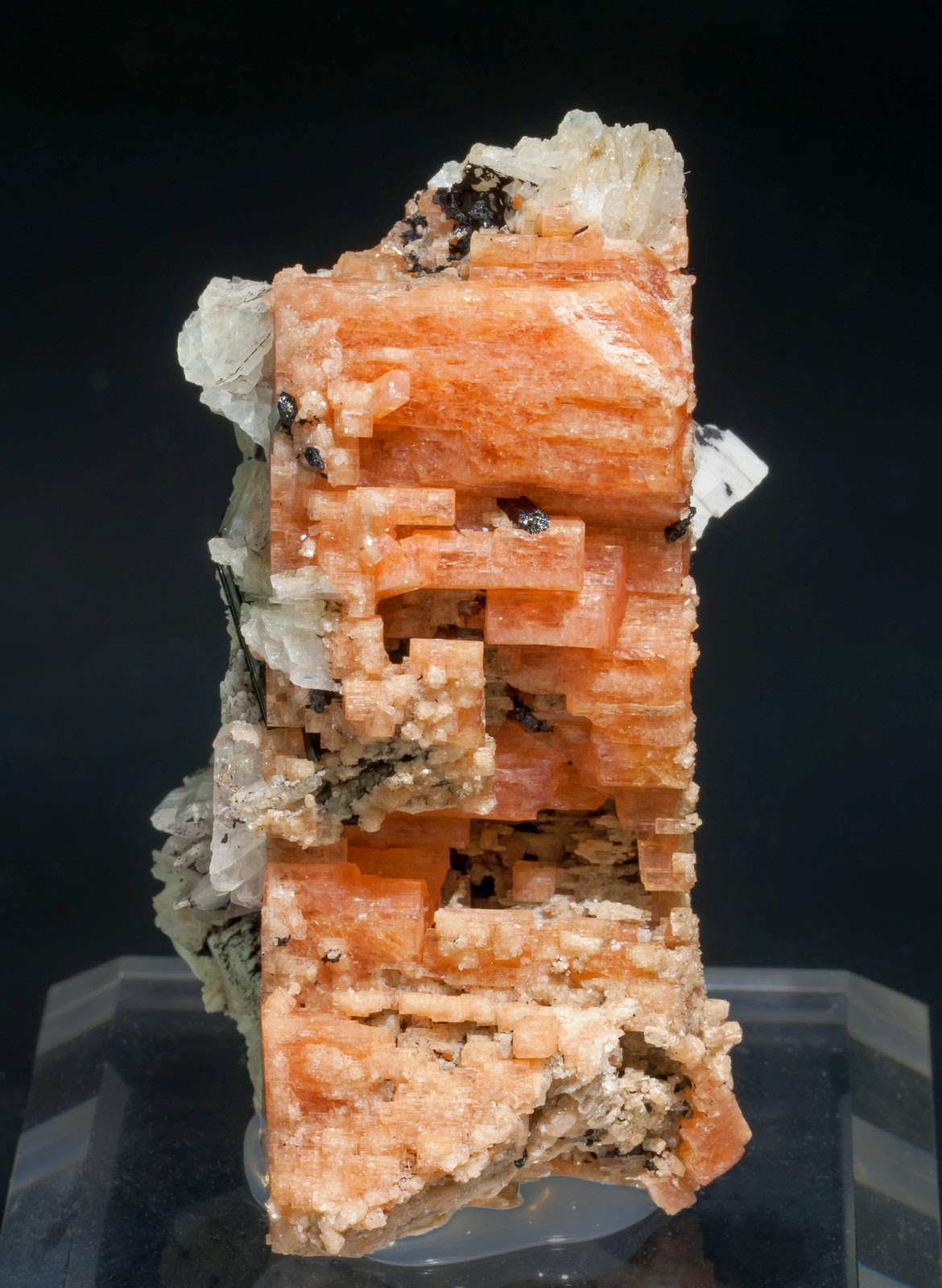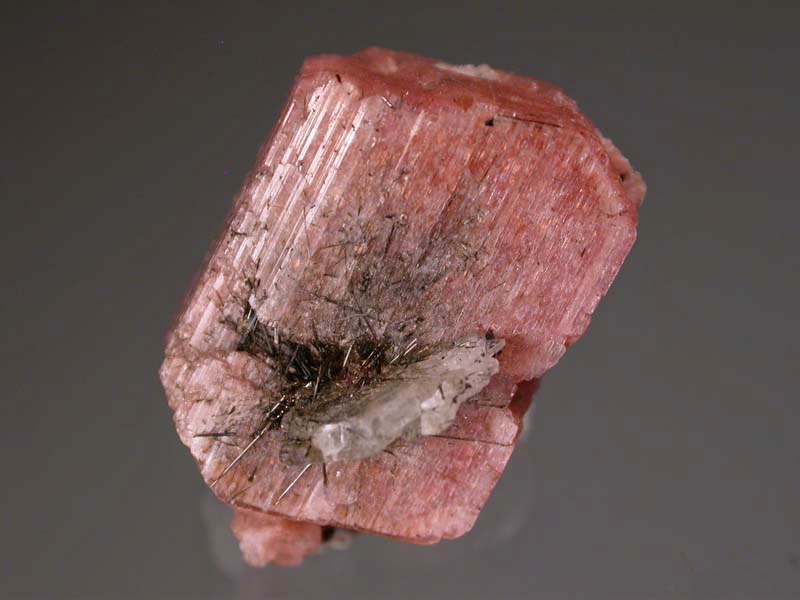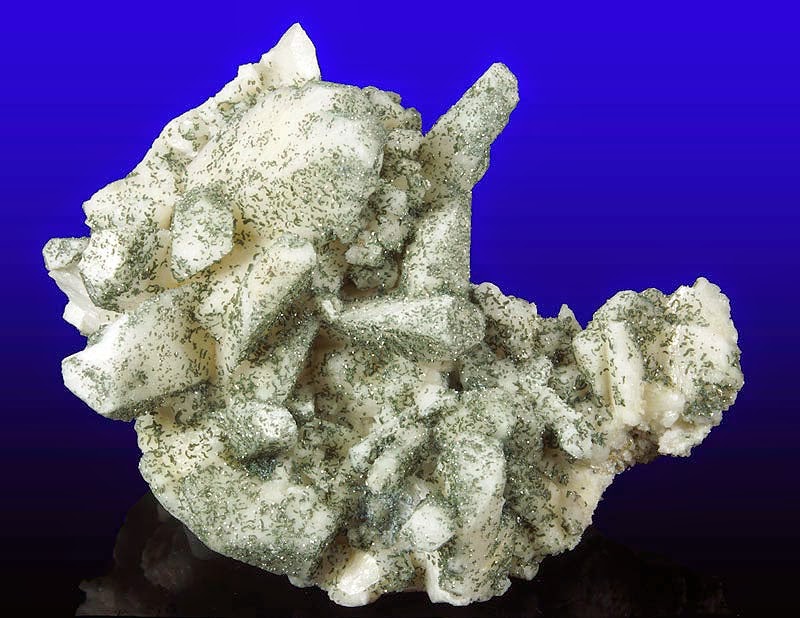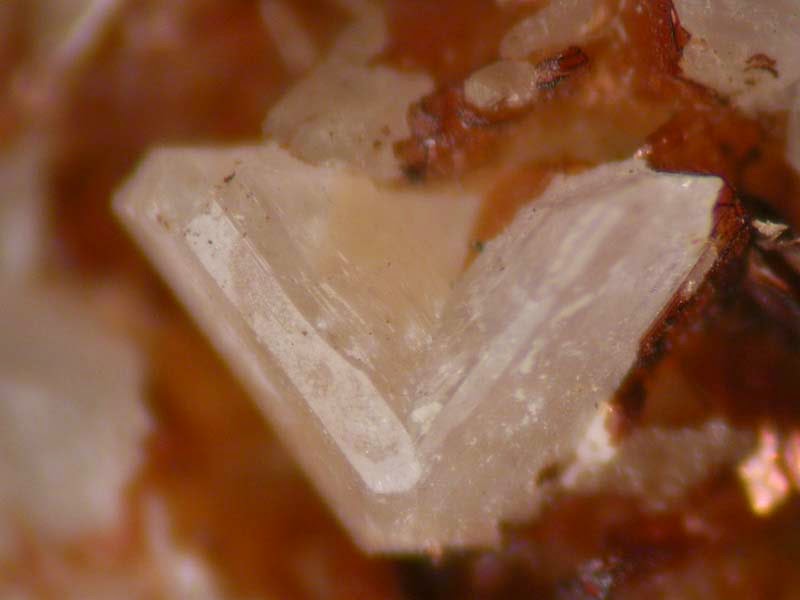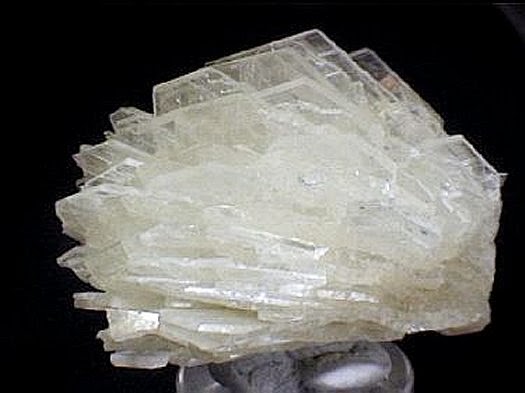
Chemical Formula: NaAlSi3O8
Locality: Finnbo, Falun, Dalarna, Sweden. Bourg d’Oisans and Isere, France.
Name Origin: From the Latin, albus, in allusion to the common color.
Albite is a plagioclase feldspar mineral. It is the sodium endmember of the plagioclase solid solution series. As such it represents a plagioclase with less than 10% anorthite content. The pure albite endmember has the formula NaAlSi3O8. It is a tectosilicate. Its color is usually pure white, hence its name from Latin albus. It is a common constituent in felsic rocks.
Albite crystallizes with triclinic pinacoidal forms. Its specific gravity is about 2.62 and it has a Mohs hardness of 6 – 6.5. Albite almost always exhibits crystal twinning often as minute parallel striations on the crystal face. Albite often occurs as fine parallel segregations alternating with pink microcline in perthite as a result of exolution on cooling.
It occurs in granitic and pegmatite masses, in some hydrothermal vein deposits and forms part of the typical greenschist metamorphic facies for rocks of originally basaltic composition.
It was first reported in 1815 for an occurrence in Finnbo, Falun, Dalarna, Sweden.
Physical Properties
Cleavage: {001} Perfect, {010} Good
Color: White, Gray, Greenish gray, Bluish green, Gray.
Density: 2.61 – 2.63, Average = 2.62
Diaphaneity: Transparent to translucent to subtranslucent
Fracture: Uneven – Flat surfaces (not cleavage) fractured in an uneven pattern.
Hardness: 7 – Quartz
Luminescence: Fluorescent, Short UV=herry-red blue, Long UV=white.
Luster: Vitreous (Glassy)
Streak: white
Photos:
